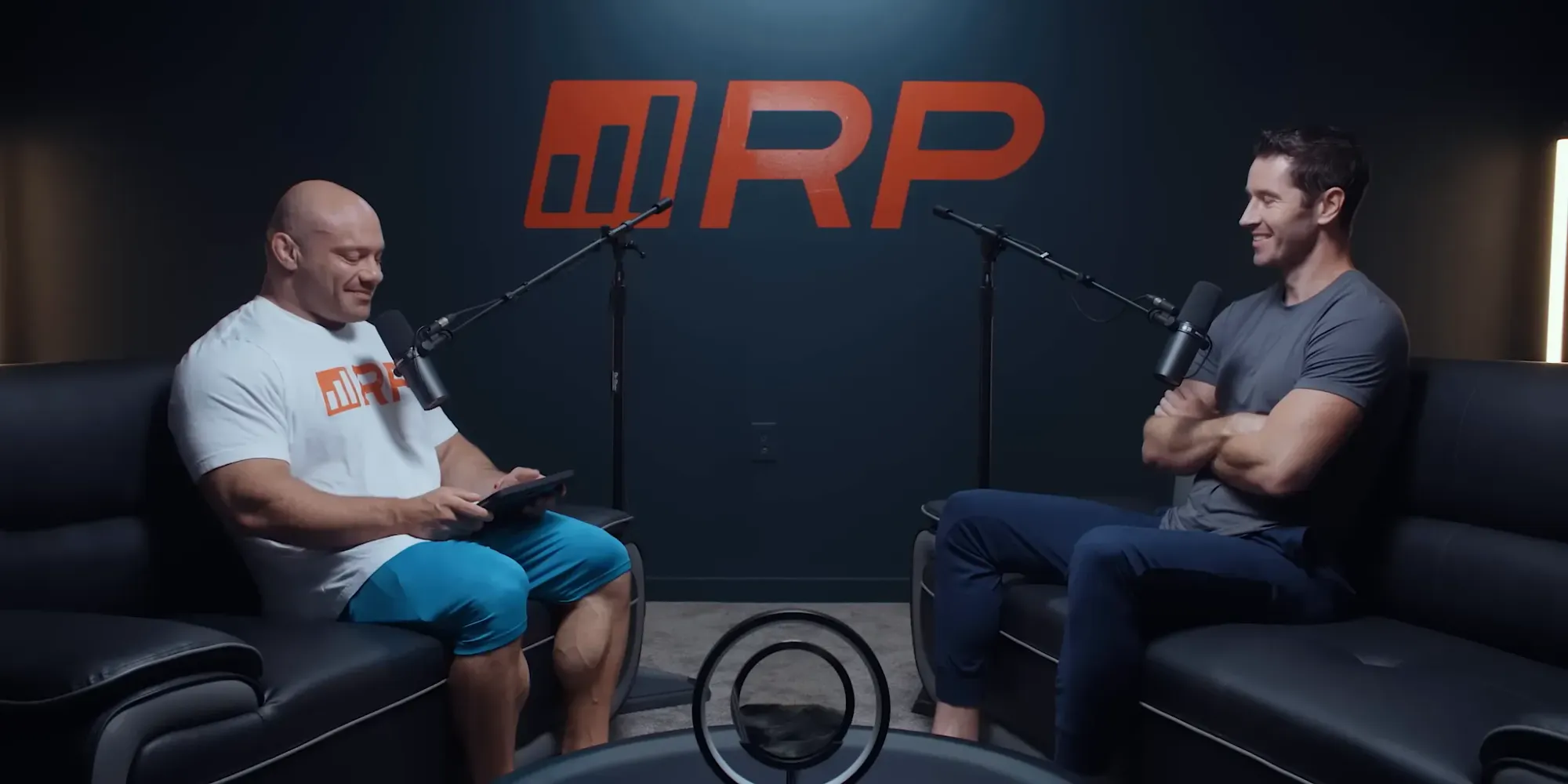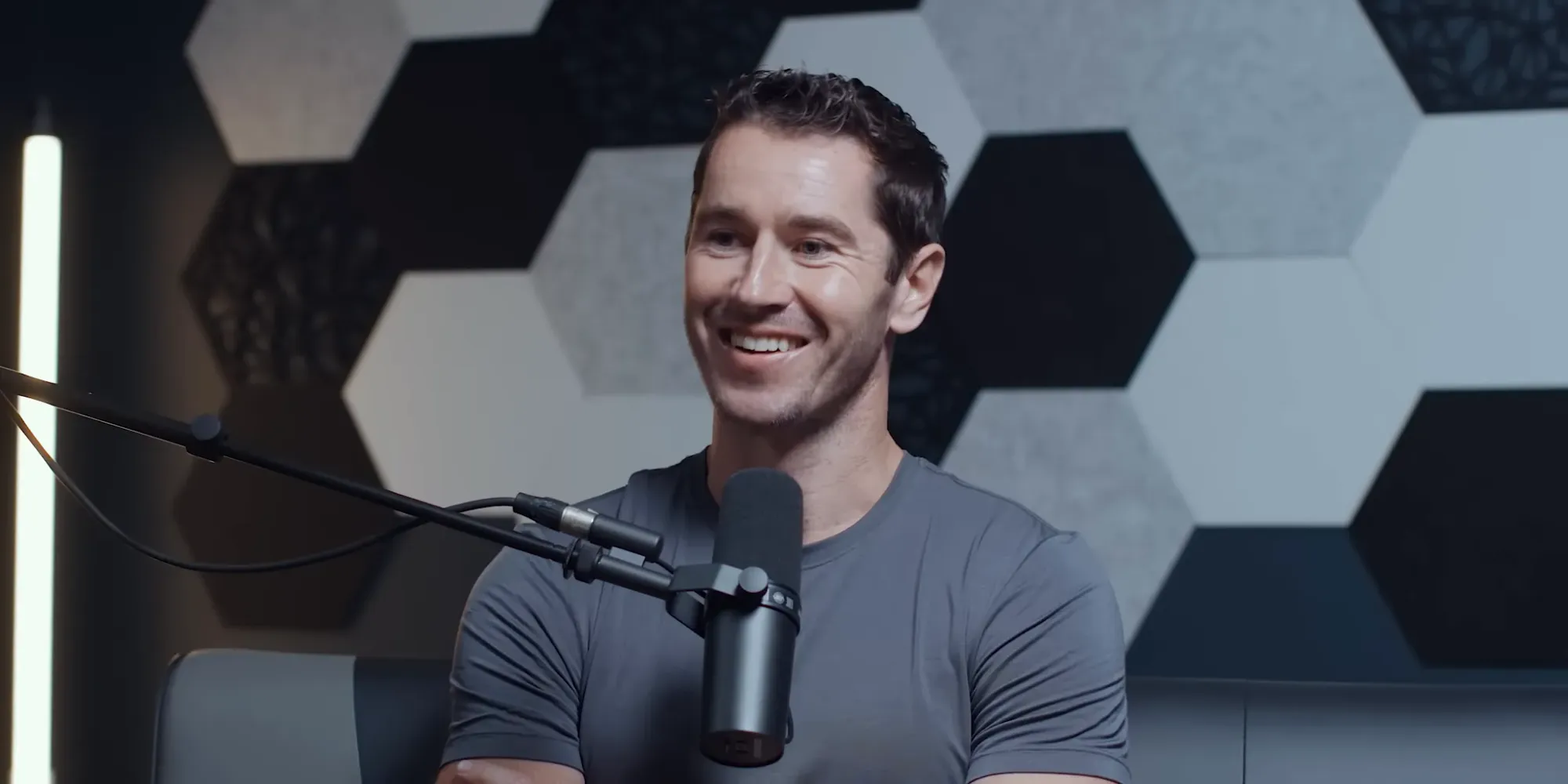Knees Over Toes Guy Program: Expert Strategies for Strong Knees
The Knees Over Toes Guy program explained: Transform your knees for better performance

Key Takeaways
- You can strengthen your knees by incorporating the "knees over toes" principle, which enhances muscle engagement and joint stability.
- Your knee health will improve significantly by focusing on gradual loading and exercises that move your knees through their full range of motion.
- You should begin with low-impact exercises like backward sled pulls before progressing to more complex movements.
- Your training should prioritize discomfort over pain—this will help push your knee strength and function forward safely.
- You can avoid common knee pain myths by embracing a well-rounded fitness routine that includes strength, flexibility, and smart movement patterns.
Want to improve knee health and build muscle?
The Knees Over Toes Guy program offers a unique approach to strengthening your knees while enhancing overall mobility. Ben Patrick challenges conventional methods by encouraging full knee range of motion, allowing the knees to move over the toes during exercises.
In this expert review, we analyze, critique, and expand on Dr. Mike and Ben Patrick’s proven strategies. Our team, including an exercise scientist with over 20 years of gym experience, reviews these methods to help you safely build knee strength and boost your athletic performance.
What makes our guide different?
- Carefully reviewed by experts with 300+ articles published, including an exercise scientist with over 20 years of experience in the field.
- We include essential tips and tricks to optimize knee health while preventing common mistakes.
- Access an expert workout based on Dr. Mike and Ben Patrick’s insights, designed to help you strengthen your knees and transform your body.
Ready to enhance your knee health and physique? Continue reading to learn how to safely build stronger knees and muscles, as well as improve overall performance with the Knees Over Toes Guy program.
Related:
- Leg Day Workout: 9 Best Gym Exercises for Muscular Legs
- 9 Underrated Exercises for Your Abs, Chest, Back & More
- 5 Best Workout Splits for Muscle Growth [Science-Backed]
In a Nutshell: Transform Your Knees
Your knees will thrive when you focus on progressive loading, gradually increasing the intensity of your workouts without causing pain. Remember, your capacity to handle slight discomfort will push your strength forward.
You can transform your knee health and performance by breaking free from outdated fitness dogmas and building a routine that supports both strength and mobility. Your knees are more capable than you think—embrace the journey!
| Key Concept | Main Insight |
|---|---|
| Knees Over Toes | Letting your knees move over your toes increases muscle engagement and joint stability. |
| Loading and Frequency | Gradual increases in load help strengthen your knees without overwhelming them. |
| Foundational Exercises | Begin with movements like backward sled pulls to prevent injury while building strength. |
| Mobility and Flexibility | Focus on full range motion to enhance knee mobility and prevent stiffness. |
| Smart Training Approach | Build confidence and performance by training smart, not just hard. |
Introduction to the Knees Over Toes Guy

Ben Patrick, widely recognized as the Knees Over Toes Guy, has transformed the understanding of knee health through his unique approach. His methods emphasize the importance of allowing the knees to travel over the toes during exercises. This perspective challenges conventional training wisdom that often promotes knee protection through avoidance. Instead, Ben advocates for a training style that enhances strength and mobility by engaging the knees through their full range of motion.
Early Life and Background

Ben was born in San Jose, California. His parents, Brian and Celia, worked hard in commercial office management. This work ethic influenced Ben profoundly. He often accompanied his parents to work, witnessing their dedication firsthand. They encouraged him to pursue his dreams, including a desire to play in the NBA, despite their doubts about his chances.
At a young age, Ben showed an affinity for basketball. He began playing and training seriously, driven by the belief that hard work would lead to success. However, by the age of twelve, he started experiencing chronic knee pain, a condition that would plague him for years. This pain marked the beginning of a challenging journey through youth sports.
Struggles with Injury and Depression
Ben's knee pain significantly impacted his athletic career. As he pushed himself harder, the pain worsened, leading to frustration and disappointment. By the time he reached high school, he was struggling to keep up with his peers. While they thrived, he felt increasingly sidelined by his injuries.
His physical struggles also took a toll on his mental health. The combination of chronic pain and the pressure to perform led to feelings of depression. He grappled with self-esteem issues, feeling inadequate compared to others. Basketball, once a source of joy, became a source of pain and anxiety.
Understanding Frequency, Loading, and Approach

Determined to overcome his injuries, Ben began exploring alternative training methods. He discovered the concept of frequency and loading through various strength training resources. This approach emphasized the importance of gradually increasing the load on the knees rather than avoiding it altogether.
By incorporating exercises that allowed his knees to move through their full range of motion, Ben experienced a shift in his knee health. He started with backward sled pulls, a movement that engaged his quadriceps without putting excessive strain on his knees. This foundational exercise opened the door to more complex movements and greater strength.
Timeline for Improvement

Ben's journey to recovery was not instantaneous. It took time and dedication to see significant improvements. Within a week of implementing his new training strategies, he noticed a reduction in pain. This initial success motivated him to continue pushing forward.
As he incorporated more advanced movements and gradually increased the load, Ben's knee health improved dramatically. He learned to embrace the discomfort and adapt his training accordingly. Over the years, he transformed from a young athlete plagued by injuries to a confident individual capable of dunking a basketball.
Finding Your Capacity
Understanding your body's limits is crucial. You need to recognize what you can and can't do. Start by assessing your current capabilities. This isn't about pushing through pain; it's about finding a manageable discomfort threshold. Focus on exercises where you feel slight discomfort but not pain. This is where growth happens.
Begin with basic movements. Simple exercises can reveal a lot about your range of motion. Over time, increase the load gradually. This progressive approach allows your body to adapt. You'll find that you can handle more than you initially thought.
The Journey Back to Playing Basketball

Returning to basketball after injury can be daunting. It requires both physical and mental preparation. Start with foundational exercises that build strength in your knees and legs. Exercises like sled pulls and squats are essential. They help develop the necessary strength without putting undue stress on your knees.
Once you feel comfortable, introduce basketball-specific drills. Start with light shooting and dribbling. Gradually increase the intensity. This helps your knees adjust to the movements involved in basketball. The key is to listen to your body. If something doesn't feel right, scale back.
Debunking the Dogma of Knees Over Toes
For years, the fitness community has warned against letting your knees travel over your toes. This dogma is not only outdated but also misleading. The human body is designed to move through a full range of motion. Restricting movement can lead to more problems in the long run.
When you allow your knees to travel over your toes, you engage more muscle groups. This increases strength and stability. The misconception that this movement is dangerous often stems from a lack of understanding. It's not the movement itself that causes injury, but how it's performed.
Current Observations on Knee Health

Today, more people are recognizing the importance of knee health. Many are beginning to embrace the concept of full range of motion in their workouts. This shift is crucial for improving overall joint health. It's about training smart, not just hard.
Incorporating various exercises into your routine can lead to better outcomes. Movements that strengthen the quadriceps, hamstrings, and calves are essential. They provide support to the knee joint, reducing the risk of injury. Regularly assess how your knees respond to different loads and movements.
Thoughts on Knees Over Toes
The phrase "knees over toes" has become a rallying cry for many. It emphasizes the need to rethink traditional exercise norms. Embracing this concept can lead to improved function and strength. It's a reminder that our bodies can handle more than we often give them credit for.
When training, focus on what feels right for your body. Everyone's anatomy is different, so tailor your approach accordingly. Work on building confidence in your movements. This mindset shift can unlock new levels of performance.
Incorporating knees over toes principles means embracing discomfort, not pain. It's about challenging yourself safely. Over time, you'll find that your knees can handle more than you thought possible. Remember, the journey is as important as the destination.
Practical Tips for Knee Health

Taking care of your knees is essential for maintaining an active lifestyle. Here are some practical tips to promote knee health:
- Start Slow: If you’re new to exercise, begin with low-impact movements. Walking, swimming, or cycling are excellent choices.
- Incorporate Strength Training: Focus on building strength in your legs. Exercises like squats and lunges help strengthen the muscles around your knees.
- Emphasize Flexibility: Stretch regularly to maintain flexibility in your legs. Tight muscles can lead to knee pain.
- Use Proper Footwear: Wear shoes that provide adequate support. Avoid high heels and worn-out shoes that could lead to instability.
- Listen to Your Body: Pay attention to any pain or discomfort. If something doesn’t feel right, adjust your activity accordingly.
The Importance of Full Range of Motion
Using your knees through their full range of motion is vital for overall joint health. This practice strengthens the muscles and improves flexibility. Here’s why it matters:
- Improved Mobility: Regularly engaging the knees in various movements helps maintain and improve mobility.
- Injury Prevention: Strengthening the knee joint through a full range of motion can reduce the risk of injury.
- Enhanced Performance: Athletes benefit from full range movements as they enhance performance in sports and daily activities.
Addressing Common Misconceptions

Many myths surround knee health and exercise. It's essential to debunk these misconceptions to encourage a healthier approach:
- Myth: Knees Should Never Go Over Toes: This outdated belief can limit mobility. Allowing your knees to travel over your toes during certain exercises can enhance strength and flexibility.
- Myth: Rest is Always the Best Medicine: While rest is important, too much can weaken muscles and worsen knee pain. Gradual movement is often more beneficial.
- Myth: Older Adults Should Avoid Exercise: Everyone can benefit from exercise, including older adults. Tailored activities can improve strength and reduce pain.
Building a Community Around Knee Health
Connecting with others who share similar goals can be motivating. Here are ways to build a supportive community:
- Join Local Classes: Participate in group fitness classes focused on knee health. This can provide both support and accountability.
- Online Forums: Engage in online communities where you can share experiences and learn from others.
- Social Media Groups: Follow knee health advocates and join groups that discuss exercises and tips.
Knees Over Toes Workout: Strengthen Your Knees and Build Muscle
This workout plan is inspired by the expertise of Dr. Mike and Ben Patrick, focusing on the key insight from the article: building knee strength through full range of motion exercises, particularly allowing the knees to travel over the toes. By incorporating these principles into your routine, you'll strengthen your knees, improve mobility, and boost overall performance. This workout plan is designed to gradually increase intensity, reduce the risk of injury, and challenge your body to adapt and grow stronger.
Overview
- Ideal for: Individuals looking to strengthen their knees, improve mobility, and build muscle
- Equipment needed: Sled, squat rack, dumbbells, resistance bands, comfortable footwear
Workout Split
- Day 1: Lower Body Strength and Knee Health
- Day 2: Active Recovery and Mobility
- Day 3: Upper Body Strength with Knee Engagement
- Day 4: Lower Body Strength and Plyometric Training
- Day 5: Rest and Flexibility
Day 1: Lower Body Strength and Knee Health
| Exercise | Sets | Reps | Rest |
|---|---|---|---|
| Backward Sled Pulls | 4 | 20m | 90s |
| Goblet Squats | 4 | 12 | 90s |
| Bulgarian Split Squats | 3 | 10 | 60s |
| Calf Raises | 4 | 15 | 60s |
Pro Tips
- Focus on controlled movements to maximize muscle engagement.
- Maintain a slight bend in the knee during calf raises for added tension.
- Keep your back straight during goblet squats for optimal form.
Day 2: Active Recovery and Mobility
| Exercise | Sets | Reps | Rest |
|---|---|---|---|
| Walking Lunges | 3 | 15 | 60s |
| Leg Swings | 3 | 20 | 30s |
| Hip Flexor Stretch | 3 | 30s | - |
| Ankle Mobility Drill | 3 | 20 | 30s |
Pro Tips
- Focus on smooth, controlled motions during walking lunges to improve flexibility.
- Hold the hip flexor stretch for 30 seconds on each side.
- Perform ankle mobility drills slowly to increase range of motion gradually.
Day 3: Upper Body Strength with Knee Engagement
| Exercise | Sets | Reps | Rest |
|---|---|---|---|
| Push-Ups | 4 | 15 | 90s |
| Dumbbell Rows | 4 | 12 | 90s |
| Chest Press | 4 | 10 | 90s |
| Farmer's Walk | 3 | 40m | 60s |
Pro Tips
- Focus on proper form during dumbbell rows to engage the upper back.
- Use a challenging weight for the farmer's walk to improve grip strength and core stability.
- Keep your core tight during push-ups to protect your lower back.
Day 4: Lower Body Strength and Plyometric Training
| Exercise | Sets | Reps | Rest |
|---|---|---|---|
| Box Jumps | 3 | 10 | 90s |
| Bulgarian Split Squats | 4 | 10 | 90s |
| Leg Press | 4 | 12 | 90s |
| Single-Leg Deadlifts | 3 | 12 | 60s |
Pro Tips
- Focus on explosiveness during box jumps to engage fast-twitch muscle fibers.
- For Bulgarian split squats, lower the back knee gently to avoid unnecessary strain.
- Keep a slight bend in the knee during deadlifts to engage hamstrings fully.
Notes on Program Execution
- Gradual Progression: Increase weights gradually as strength improves, but always focus on form first.
- Recovery: Active recovery days are vital to prevent burnout and enhance mobility. Do not skip them.
- Consistency: Stick to the program for at least 4-6 weeks to see measurable improvements in knee health and strength.
This workout plan is built around the principles of the Knees Over Toes Guy approach to strengthen your knees while gradually building overall muscle. Combining full range of motion exercises and controlled loading will improve your mobility and reduce the risk of injury. The key is consistency and gradual progression.
Want to automate that workout and more? Put your progress on autopilot with Dr. Muscle AI. Try it free.
Expert Corner: Proven Strategies & Hidden Gems
Practical Applications
- Knees Over Toes Principle
Apply the "knees over toes" principle to squats, lunges, and step-ups. When performing squats, allow your knees to track over your toes rather than restricting them behind. This will activate your quadriceps and improve overall knee strength. Start with light loads and aim for 3 sets of 12-15 reps, gradually increasing weight as you build strength. - Full Range of Motion
To improve knee mobility, incorporate exercises that take your knees through their full range of motion, such as deep squats and lunges. This not only strengthens the muscles around your knees but also enhances flexibility. Try adding deep squats to your routine twice a week, focusing on proper form and depth—aim for 3-4 sets of 8-10 reps with a controlled tempo. - Gradual Loading
Start with low-impact exercises like backward sled pulls to build knee strength without adding too much stress. Perform 3-4 sets of 20-30 meters, adjusting the resistance as you gain confidence. As your knees adapt, progressively increase the resistance or try more complex exercises like leg presses to challenge your strength further. - Discomfort Over Pain
Focus on movements that bring slight discomfort but avoid pain. If an exercise feels too intense, reduce the intensity or switch to a lower-impact variation. Gradually increase the load as your knees become more accustomed to the discomfort. Track your progress each week, ensuring that the pain is manageable and not painful. - Breaking Common Myths
Incorporate exercises that challenge traditional views on knee safety, like allowing your knees to go over your toes during leg exercises. By doing so, you'll build better mobility and knee strength. Start with lighter weights and aim for higher repetitions (12-15 reps) to safely introduce the concept without overloading the joint.
Examples:
- Backward Sled Pulls: Start your knee-strengthening journey with backward sled pulls, aiming for 3-4 sets of 20 meters. This exercise activates your quads while reducing knee strain.
- Deep Squats: Incorporate deep squats into your workout routine, starting with bodyweight squats for 3-4 sets of 12 reps. Gradually add resistance as your mobility improves.
Fact-Check of Key Points
- Knees Over Toes Movement
The "knees over toes" concept, popularized by Ben Patrick, has become a central idea in his program. While it's true that allowing the knees to travel over the toes can enhance strength and mobility, it's important to note that the effectiveness of this approach depends heavily on the individual’s biomechanics and the execution of the movement. This movement may require modifications or additional support to avoid discomfort or strain for some people, particularly those with pre-existing knee issues or imbalances. - Full Range of Motion
The claim that using the knees through their full range of motion is vital for overall joint health is generally supported in the context of mobility. However, it's essential to understand that "full range of motion" doesn't mean forcing extreme movements. A gradual, controlled approach should always be emphasized for individuals new to exercise or those with knee pain. Pushing too far too quickly ,can lead to injury, even with proper technique. - Gradual Loading
As mentioned in the Knees Over Toes Guy program, Gradual loading is a solid principle for building knee strength. It encourages incremental progression, which can help prevent overload. However, tailoring this progression to the individual’s fitness level and existing knee condition is crucial. What works for one person may not be suitable for another, especially for those just starting out or dealing with severe knee pain. - Breaking the "No Knees Over Toes" Myth
The claim that avoiding knee movement over the toes is an outdated myth is controversial. Traditional training methods have emphasized keeping the knees behind the toes to protect the joints, particularly during squats and lunges. While it's true that recent approaches, like those advocated by Ben Patrick, show benefits for some people, it's also essential to recognize that this may not be universally applicable. People with knee instability or other orthopedic conditions should approach this advice cautiously and, if possible, seek professional guidance. - Discomfort vs. Pain
The advice to embrace discomfort, but not pain, is a crucial distinction in the Knees Over Toes Guy program. However, it's important to recognize that the threshold between discomfort and pain can vary significantly between individuals. What one person considers mild discomfort could potentially be harmful to another. Therefore, it’s vital for practitioners to listen to their bodies and adjust their approach based on how their knees feel during and after exercises.
More Little-Known Tips for Maximizing the Knees Over Toes Guy Program
- Focus on Ankle Mobility
To fully benefit from the Knees Over Toes Guy program, it's not just about your knees—it’s also crucial to pay attention to your ankle mobility. Limited ankle flexibility can restrict the depth of your squat or lunge, preventing you from fully engaging your knees in a safe, controlled manner. Try incorporating ankle stretches and mobility drills, like calf raises and dorsiflexion stretches, into your routine to ensure your ankles can move freely, allowing you to perform knee-centric movements with greater ease. - Incorporate Eccentric Movements
Eccentric training, where the muscle lengthens under load (like the downward motion of a squat), is essential for strengthening the muscles around your knees and improving joint stability. For example, slow and controlled squats or lunges, focusing on the lowering phase, can build strength in your quadriceps and hamstrings, which is vital for knee health. This type of training enhances muscle activation and can be particularly beneficial for those looking to recover from knee pain or injuries. - Use Active Recovery
Recovery is just as important as training, especially when following a program that challenges your knees with new movements. Active recovery, such as cycling, swimming, or even walking, can help increase blood flow and promote healing without putting excess strain on your knees. This method can be particularly helpful for those incorporating intense exercises like sled pulls or squats, allowing your knees to recover while still engaging in low-impact activities. - Build Patience with Progressions
While the Knees Over Toes Guy program emphasizes rapid progress, it’s vital to embrace a steady, patient approach when beginning new exercises. Your body may not respond immediately, and that’s okay. Progress comes with consistent effort over time. Stick with foundational movements, and don't rush into complex exercises until you're confident in your ability to perform basic movements like backward sled pulls and bodyweight squats. Building strength and mobility takes time, and small improvements add up. - Embrace the Benefits of Slower Movements
While speed and intensity are important aspects of fitness, slowing down your movements—especially during exercises like lunges or squats—can help improve your knee health. Moving slowly allows for better control and increases time under tension, which leads to greater muscle activation. Focus on form and use a controlled tempo to engage your muscles fully, reducing the risk of injury while building strength.
These little-known tips will enhance your experience with the Knees Over Toes Guy program, helping you strengthen your knees, improve mobility, and move more efficiently in the long run. Stay consistent and trust the process—you’ll be amazed by the results.
More Exercises for Strong Knees
Here are more exercises that emphasize full range of motion and controlled knee movement, which can dramatically improve knee health and mobility.
- Backward Sled Pulls: This exercise is a foundational movement that targets the quadriceps while minimizing stress on the knees. It's great for building knee stability and strength.
- Goblet Squats: By allowing your knees to travel over your toes, goblet squats engage the quads, hamstrings, and calves, strengthening the entire lower body and improving joint mobility.
- Bulgarian Split Squats: These are excellent for building single-leg strength, balance, and stability, and they help improve flexibility in the hips and knees.
- Calf Raises: Calf raises not only strengthen the lower legs but also help in promoting proper ankle mobility, supporting knee function.
- Box Jumps: Incorporating plyometric movements like box jumps builds explosive power while training the knees through dynamic range of motion, improving strength and resilience.
These exercises are designed to engage the muscles surrounding the knees, enhance mobility, and protect against injury when performed with proper form.
Science of Transforming Knee Health: Knees Over Toes Guy
The "Knees Over Toes Guy" training system has gained attention for its approach to improving knee health, muscle hypertrophy, and strength, particularly through exercises emphasizing knee flexion and extension. While research on this specific training method is limited, related studies provide insights into the effects of knee-strengthening exercises and muscle activation on overall knee health, hypertrophy, and strength. Notable findings from various systematic reviews and meta-analyses indicate that strengthening knee muscles, including quadriceps, can reduce pain and improve function in individuals with knee conditions. Additionally, such exercises are associated with improved strength and hypertrophy, particularly in individuals undergoing rehabilitation.
Key Findings from Relevant Studies
- Muscle Strength and Knee Health: Knee extensor strength is crucial in reducing the risk of knee osteoarthritis (OA) and its symptoms. Weakness in knee extensor muscles has been linked to a higher risk of knee OA (Øiestad et al., 2015).
- Hypertrophy and Strength Gains: Strength training, especially knee extensor exercises, can lead to significant improvements in knee strength and may contribute to a reduction in knee pain (Bartholdy et al., 2017).
- Quadriceps Training: Quadriceps strengthening exercises, including those used in the "Knees Over Toes" approach, are shown to be effective in reducing knee pain and improving function in individuals with knee conditions (Van Cant et al., 2020).
Scientific Conclusion
Strengthening the knee extensor muscles, primarily through targeted exercises, significantly improves knee health, reduces pain, and enhances muscle strength and hypertrophy, especially in populations prone to knee conditions.
My Opinion on the Knees Over Toes Guy Program
I believe the Knees Over Toes Guy program represents a significant shift in how we approach knee training, though it requires a thoughtful, balanced perspective. While the traditional fitness industry has long warned against letting knees pass the toes, I've found through both research and practical experience that this oversimplified rule has limited athletic potential.
The program's emphasis on progressive loading and full range of motion makes sense physiologically. Having observed countless athletes and fitness enthusiasts, I've seen how controlled knee-over-toe movements can enhance joint stability and muscle engagement. However, I think it's crucial to acknowledge that success depends heavily on proper execution and individual adaptation.
That said, I don't fully agree with some of the program's more enthusiastic claims. While backward sled pulls and progressive loading are excellent tools, they're not universal solutions. I've noticed that results vary significantly based on individual biomechanics and training history. Some people need to modify the approach considerably to benefit safely.
For most people, I believe the sweet spot lies in combining the program's innovative methods with traditional strength training principles. This means starting conservatively, progressing gradually, and paying close attention to how your body responds. The key is finding the right balance between challenging your knees and respecting their limits.
Overall, I support the program's core principles while advocating for a measured approach. Your success will likely come from thoughtful implementation rather than blindly following any single methodology.
Conclusion: A Smarter Approach to Knee Health
Ben Patrick’s Knees Over Toes Guy program challenges traditional fitness wisdom by emphasizing full range of motion and controlled knee movement. By allowing your knees to move over your toes, you engage more muscle groups, increase strength, and improve knee mobility. The key takeaway is that gradual progress, smart loading, and a focus on proper form can transform your knee health and overall athletic performance.
However, while the program offers great benefits, it’s important to listen to your body and adapt the exercises to suit your specific needs. Every individual’s knee health is unique, and understanding your capacity for discomfort (not pain) is essential. By incorporating a balanced approach, you’ll experience better long-term results without overloading your joints.
If you want a hassle-free, personalized training experience, I recommend the Dr. Muscle app. It automates your workouts, adjusts to your progress, and ensures you’re training effectively for your body’s needs. Get started today with a free trial at Dr. Muscle and experience how easy it is to train smarter and strengthen your knees.
FAQ
What is the Knees Over Toes Guy program?
The Knees Over Toes Guy program is a fitness approach created by Ben Patrick, focused on improving knee health through full range of motion exercises. It emphasizes allowing the knees to travel over the toes during movements to engage more muscle groups, increase strength, and improve knee mobility.
How does the Knees Over Toes Guy program improve knee health?
The Knees Over Toes Guy program improves knee health by challenging traditional exercise norms, allowing the knees to move through their full range of motion. This increases muscle engagement around the knee joint, strengthens the quads, hamstrings, and calves, and enhances overall knee stability.
What exercises are included in the Knees Over Toes Guy program?
The Knees Over Toes Guy program includes exercises like backward sled pulls, deep squats, lunges, and other movements that allow the knees to travel over the toes. These exercises are designed to build strength, mobility, and flexibility in the knee joint without overloading it.
Is the Knees Over Toes Guy program suitable for beginners?
Yes, the Knees Over Toes Guy program is suitable for beginners, provided they start with foundational exercises and progress gradually. Beginners should focus on low-impact movements and master basic exercises like backward sled pulls before advancing to more complex movements.
Can the Knees Over Toes Guy program help with knee pain relief?
The Knees Over Toes Guy program can help with knee pain relief by strengthening the muscles around the knee joint and improving mobility. Gradual loading and controlled movements reduce strain on the knees, promoting recovery and reducing discomfort over time.
How long does it take to see results from the Knees Over Toes Guy program?
Results from the Knees Over Toes Guy program vary, but improvements in knee health can often be felt within a week of starting, with noticeable progress in strength and mobility. Consistent practice and gradual progression are key to seeing long-term results.
Are there any risks associated with the Knees Over Toes Guy program?
While the Knees Over Toes Guy program is generally safe, improper form or progressing too quickly can lead to strain or injury. It’s important to listen to your body, start with low-impact exercises, and increase intensity gradually to minimize risk.
How do I start the Knees Over Toes Guy program?
To start the Knees Over Toes Guy program, begin with foundational exercises like backward sled pulls and bodyweight squats. Focus on mastering the basic movements and gradually increase the load as your knee strength and mobility improve.
What equipment is needed for the Knees Over Toes Guy program?
The Knees Over Toes Guy program typically requires minimal equipment, such as a sled for backward pulls and weights for squats or lunges. Comfortable footwear and space for basic bodyweight exercises are also necessary for the program.
Where can I find more information about the Knees Over Toes Guy program?
More information about the Knees Over Toes Guy program can be found on Ben Patrick’s official website, where detailed resources, workout plans, and training tips are available. The website also offers insights into knee health and how the program can benefit users.
What causes knee pain?
Knee pain is commonly caused by factors such as arthritis, injuries, overuse, or muscle imbalances. These conditions can strain the knee joint and surrounding muscles, leading to discomfort or injury.
How can I strengthen my knees?
Knee strength can be improved through exercises that target the quadriceps, hamstrings, and calves, such as squats, lunges, and backward sled pulls. Incorporating full range of motion movements helps build strength around the knee joint and enhances mobility.
When should I see a doctor?
A doctor should be consulted if knee pain persists despite rest and home care, or if there are signs of serious injury such as swelling, instability, or limited mobility. Professional evaluation is necessary for persistent or severe knee issues to determine appropriate treatment.

